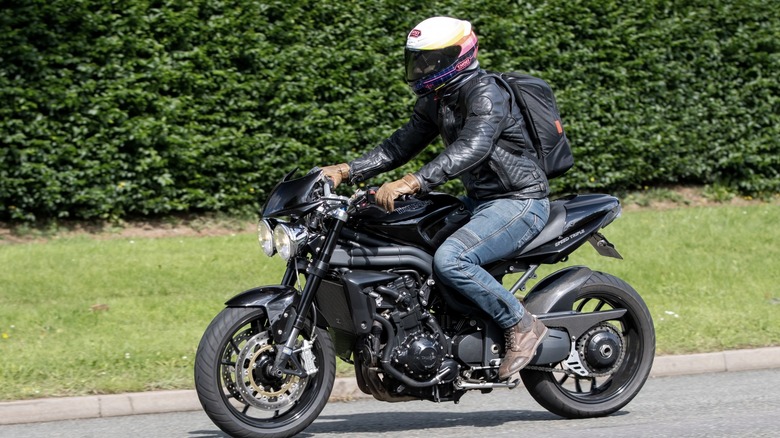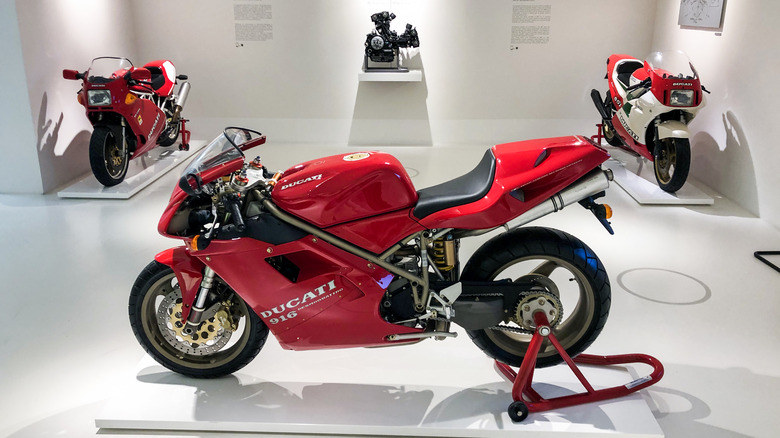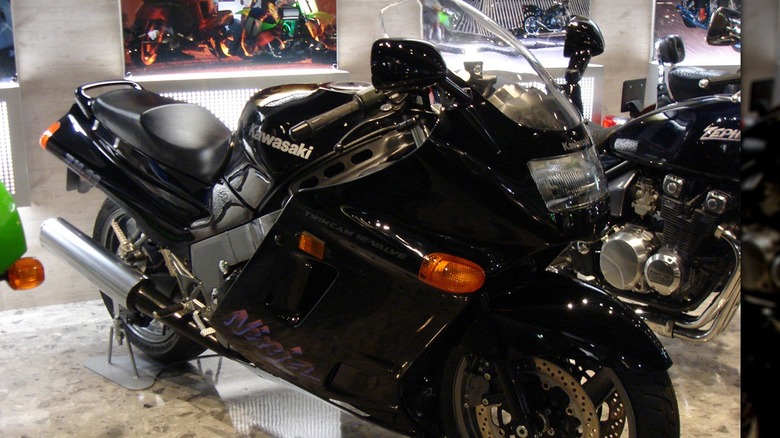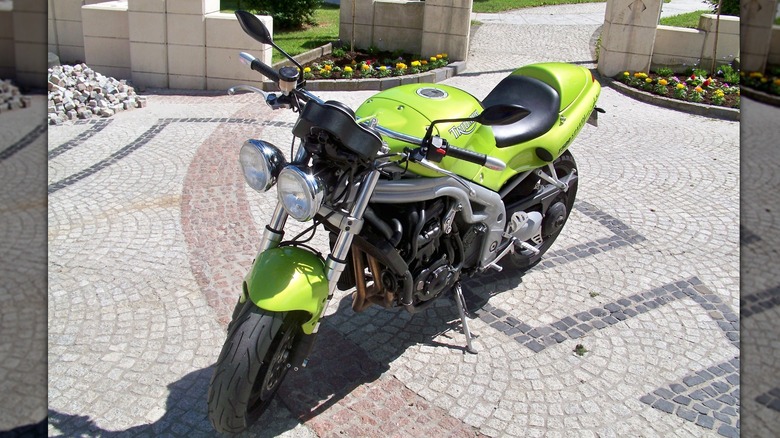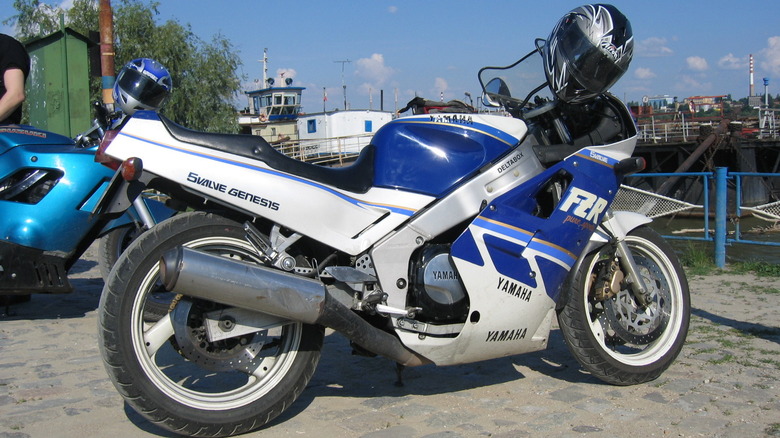These Head-Turning Motorcycles Defined The '90s
Let's rewind to the 1990s, a pivotal era in the motorcycle world. During this time, the industry experienced a notable shift in design and technology. Motorcycle enthusiasts witnessed a move from traditional boxy designs to sleek, aerodynamic structures. The era also marked a convergence of cutting-edge engineering and a quest for speed, resulting in machines that not only defined an era but also influenced the trajectory of motorcycle development.
This article takes a straightforward look at the motorcycles that defined the '90s. We'll focus on the technical aspects, design changes, and the impact these bikes had on the overall development of motorcycles. The adoption of new technologies like fuel injection systems and computerized engine controls marked a departure from the norm, as well.
As we look into this period, we encounter a diverse array of bikes that not only captured the essence of their time but also laid the foundation for the future of motorcycling. The goal is to offer a clear and straightforward overview of why the '90s is considered a significant chapter in the evolution of two-wheeled vehicles — so here are five motorcycles that defined the '90s.
Ducati 916
The Ducati 916, produced from 1994 to 1998, stands as an emblematic representation of '90s motorcycles designed by Massimo Tamburini. Tamburini's vision led to a significant reduction in size compared to its predecessors, housing a revised 916cc V-twin engine, a key element in the bike's evolution.
The 916, as the name suggests, has a 916cc engine that manifests a maximum power of 114 horsepower at 9,000 rpm, reaching a top speed of 162 mph. Weighing in at 436 pounds when dry, the bike featured Ducati's Desmoquattro engine, advanced technical elements, and a sleek, modern aesthetic that earned it the prestigious "Motorcycle of the Year" award from specialized magazines. In terms of performance, the Ducati 916 dominated the mid-'90s superbike scene, captivating motorheads and enthusiasts. The Ducati 916's distinction as a motorcycle defining the '90s stems from its role as a masterpiece of design, encapsulating the very essence of Ducati DNA, making it one of the greatest Italian motorcycles ever made.
Pricing for the Ducati 916 series spanned from $14,500 to $16,500 during its production. As of 2023, acquiring a well-maintained original Ducati 916 became a sought-after endeavor, with prices rising, reflecting its iconic status. Presently, various Ducati 916 bikes can be found, ranging from $9,000 to $50,000 for bikes with very low mileage.
Kawasaki Ninja ZX-11
The Kawasaki Ninja ZX-11, or ZZ-R1100, was another motorcycle that left a mark in the '90s during its production from 1990 to 2001. Serving as the successor to the Tomcat ZX-10, it was marketed as the ZX-11 Ninja in North America and the ZZ-R1100 elsewhere.
Powered by a 1,052cc, four-stroke, liquid-cooled, 16-valve DOHC, inline-four engine, the Ninja ZX-11 produced 147 horsepower at 10,500 rpm and 80 foot-pounds of torque at 8,500 rpm. With a six-speed manual transmission and chain drive, the bike weighed 549 pounds dry and had a top speed of 169–176 mph, earning the distinction of being the fastest production motorcycle from its introduction until 1996.
Distinguished by its aerodynamic design and pioneering ram-air induction system, the C1 model introduced in 1990 was the first production motorcycle to incorporate a ram-air intake. The 1993 D-model featured a redesigned fairing, enhancing aerodynamics. Furthering its technological edge, the bike integrated a digital instrument cluster displaying speed, RPM, fuel level, and other crucial information. The Ninja ZX-11's claim to defining the '90s lies in its exceptional performance and technological innovations — holding the title of the fastest production motorcycle until 1996 definitely helped its case.
[Featured image by PON via Wikimedia Commons | Cropped and scaled | CC BY-SA 3.0]
Honda CBR900RR
Honda CBR900RR, known as the FireBlade, entered the motorcycle scene in 1992 as the inaugural large-displacement Honda model bearing the RR suffix. Spearheaded by Tadao Baba, the first-generation CBR900RR introduced an 893cc inline-four engine, setting a new standard for lightweight in the superbike class. Based on Honda's internal "CBR750RR" research model, the bike aimed to match competitors' flagship sport bikes' acceleration. Achieving this, Honda increased the stroke of its inline four-cylinder 750cc engine, resulting in a displacement of 893cc. The bike's dry weight of 408 pounds and a body akin to the advanced research stage model contributed to its power performance.
In 1995, the second-generation CBR900RR introduced notable modifications in damping and spring rates, along with upgrades like an aluminum upper cowl stay and a magnesium cylinder head cover. The bike's styling adopted the "tiger eyes" multi-reflector lights, enhancing aerodynamics and featuring a more aggressive appearance with fewer fairing "speed" holes. The third-generation CBR900RR, unveiled in 1996, brought further advancements. The swingarm and frame incorporated larger, thinner-walled extrusions for improved torsional rigidity. Changes in shock and fork internals, a raised swingarm pivot, and elevated handlebars with a five-degree sweep back improved the riding position. The bike also featured a throttle position sensor and an enlarged exhaust.
The success of the CBR900RR influenced competitors to pursue lighter and more powerful motorcycles, solidifying its place as a motorcycle of that decade.
[Featured image by Natto kchn7 via Wikimedia Commons | Cropped and scaled | CC BY-SA 3.0]
Triumph Speed Triple
The Triumph Speed Triple, introduced in 1994, stands as an iconic motorcycle that symbolized the '90s era, too, due to its pioneering streetfighter style. Characterized by a bold design featuring minimalist bodywork and an exposed engine, the Speed Triple is considered one of the best Triumph motorcycles ever made. Its steel spine frame, uniform cycle parts, and minimalist bodywork were unique elements that set it apart at the time. Powered by a liquid-cooled, 12-valve, DOHC, inline three-cylinder engine, the Speed Triple delivered great performance. The bike generated 98 horsepower at 9,000 rpm and a peak torque of 60 foot-pounds at 6,000 rpm.
Throughout its evolution, the Speed Triple underwent significant updates. The 2005-2007 model marked a shift by becoming the sole standalone Speed Triple without a Daytona sports sibling, presenting a more aggressive design. Subsequent models, like the 2008-2010 version, received enhancements such as an extended pillion seat, a transition to Brembo brakes from Nissin, and new wheel designs. The 2016 model saw the introduction of ride-by-wire technology along with numerous upgrades in its chassis, engine, and electrical components to comply with Euro4 specifications.
The price of the Speed Triple varies according to the model and year. The latest iteration, the Speed Triple 1200 RS, starts at $18,900. Older models might be available at considerably lower prices, offering a range of options to enthusiasts.
[Featured image by sibby77 via Wikimedia Commons | Cropped and scaled | CC BY-SA 3.0]
Yamaha FZR1000
The Yamaha FZR1000, produced by Yamaha from 1987 to 1995, stands as a defining motorcycle of the '90s, as well. It was known for its innovative features, impressive performance, and continual updates that earned it, positioning it as a standout choice in the market.
Even when constructed in an era predating advanced safety features like ABS or traction control, the FZR1000 was a sportbike known for its great engineering. Its 989cc liquid-cooled inline four-cylinder engine, based on the design of the earlier Yamaha FZ750, introduced a 20-valve configuration delivering 145 horsepower and 79 foot-pounds of torque at 10,000 rpm. This power allowed the FZR1000 to achieve a top speed of 170 mph. The bike's aluminum delta-box frame significantly enhanced stability and precision. Its distinct dual headlamps and aerodynamic fairings also set a benchmark in motorcycle design during that time.
The 1991 iteration of the FZR1000 introduced upside-down telescopic forks, a feature that would later become a standard in subsequent bikes of its class. This, combined with the bike's super-stable aluminum frame, contributed to class-leading handling, making it a formidable presence on the track and the street. The bike's significance in defining the '90s lies in its reputation as one of the best production sports motorcycles of its time. Its robust engine, complemented by a well-engineered chassis, contributed to its lasting impact on the motorcycle industry during the '90s.
[Featured image by Marcos 88 via Wikimedia Commons | Cropped and scaled |Public Domain]
